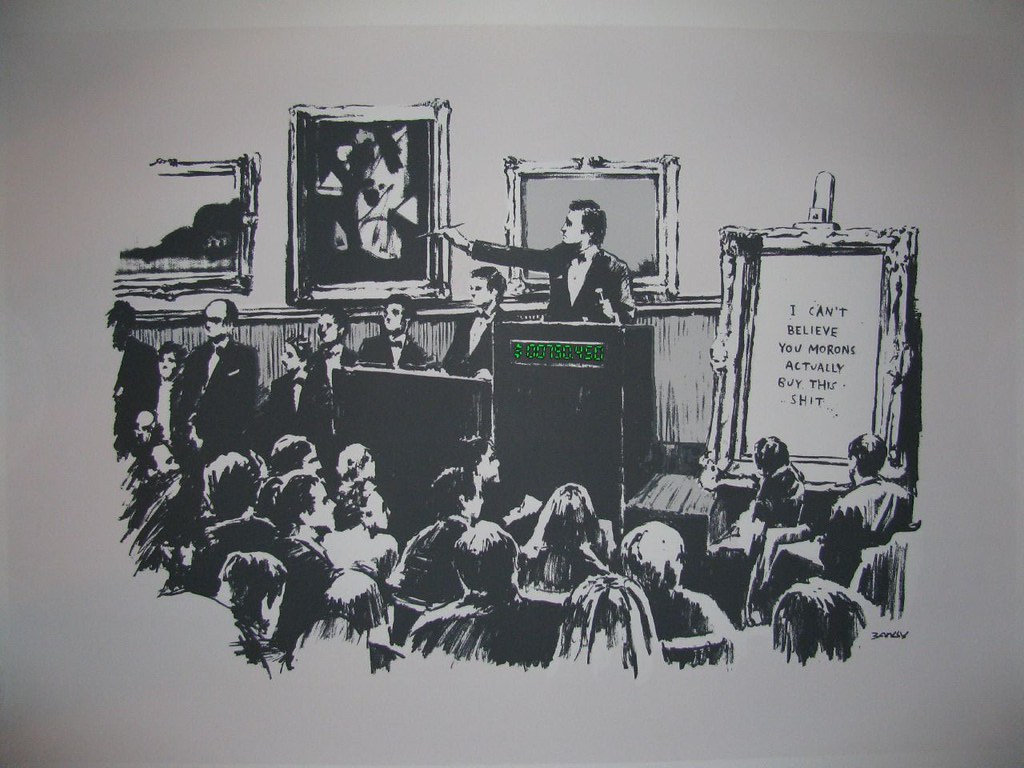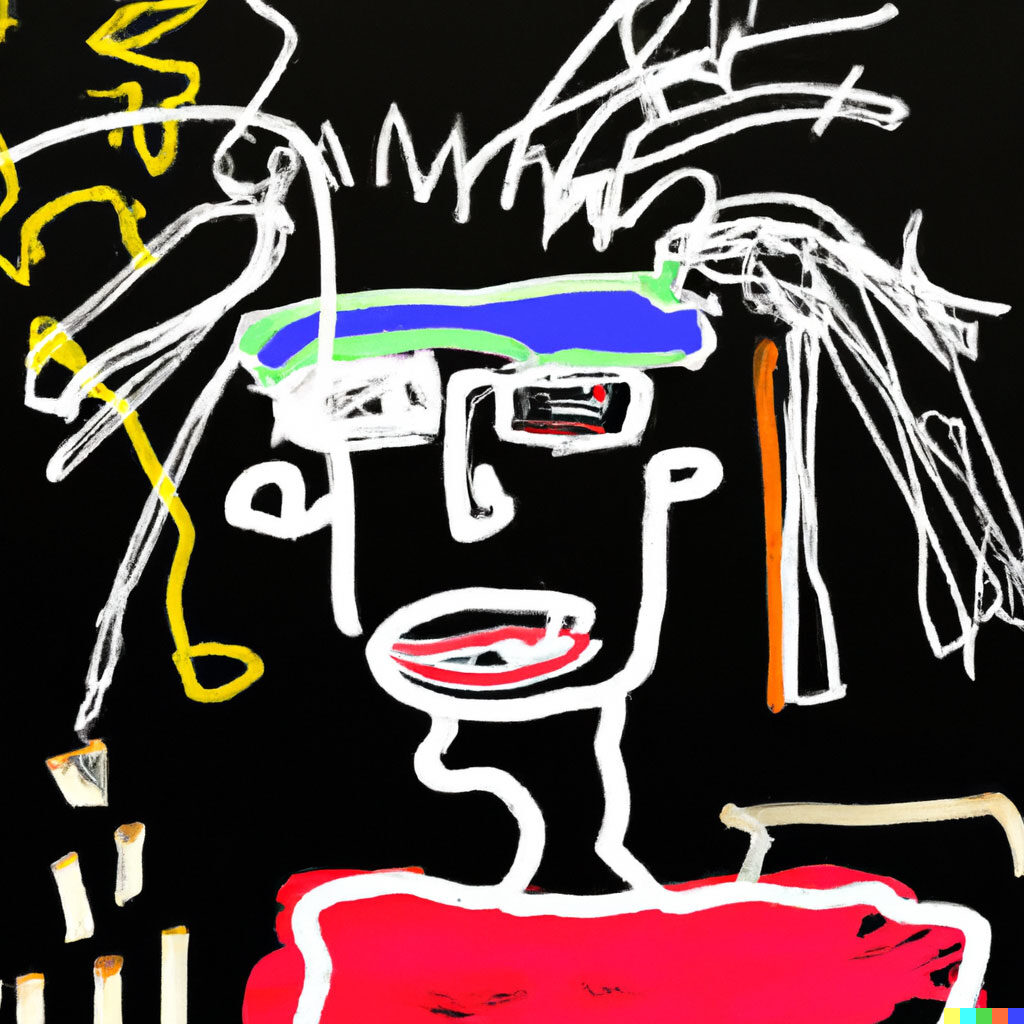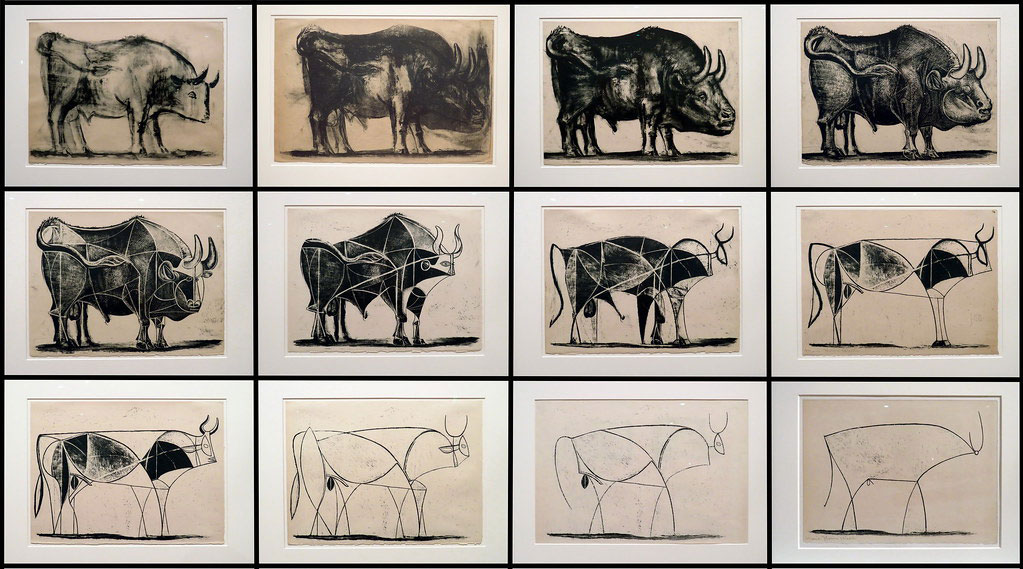The Best (and Worst) of All Metaverses
~ A short incursion into digital-crypto-machine learning art ~

In October 2022, Shutterstock (one of the largest stock images selling platforms) has announced it will start selling AI-generated images via a dedicated section on the website, in a deal struck with OpenAI, the creator of DALL-E (text-to-image generator), GPT (natural language processor) and other AI-powered architectures. This is one of the most important events that brings AI generated images into the commercial mainstream, and it closes the circle, after last year Shutterstock licensed images and metadata to OpenAI, for the foundation to build and refine DALL-E.
Besides the obvious implications of integrating machine learning algorithms into the official creative production, there are facets of the deal that are less discussed and that have significant impact on the artistic and creative world.
On one hand, the open access to computer generated images raises the need to discuss the ethical implications of such technology. Firstly, considering how powerful text-to-image generators have become, it is easy for them to reproduce works in the style of contemporary artists. It is now easier than ever to mis-represent public or influential persons, AI making high fidelity forgeries less time consuming, more accurate and automated. While some models moderate content and others (like Stable Diffusion) leave it to their users to be ethical, moral and lawful, it is nevertheless an uncharted territory with unclear consequences. It’s easy to imagine the potential of malicious uses of such technologies.

Another implication, even more impactful in the artistic world, is how these models are trained. As mentioned above, OpenAI licensed images from Shutterstock. Moreover, there are significant free databases available online, some involving works that the artists didn’t specially agree to release for training AIs. While the OpenAI-Shutterstock deal mentions creating a fund to compensate artists, this is just a small drop in the ocean, especially since the mechanism for this compensation is still unclear and it will be implemented post-factum. Also, since AI-created images become commercially available, artists might feel that their own creations were used to put them out of the job. This approach poses both legal and ethical questions – the current copyright and ownership legislation is not adapted to this new reality: as the AI training is based on millions and millions of artists’ intellectual property, the ownership cannot be assigned to a certain individual, not to mention the auctorial rights.
Compared by some with the advent of photography, when someone without painting or drawing skills could capture a realistic depiction of anything, the rising popularity of AI-generated art raised questions regarding the direction art is headed. Some argue that people create art, not cameras and algorithms and, just as photography added another instrument in the creative toolkit, so will machine learning architectures. The process also blurs the boundaries between creation and curation: algorithms can produce a virtually unlimited number of creations, but the selection process is still in the hands of the human artists – pretty much as is the case of photography, where the photographer can sometimes capture hundreds of shots before selecting only a few to display. Furthermore, text-to-image generators place images in relationship with text, a process employed by traditional curatorial processes in galleries and museums, enacting a new level of interpretation of the artworks – the final output cannot be dissociated from the starting prompt. As such, it creates an iterative process, where someone can start with a rather generic prompt, get an initial output from the AI algorithm then refine the input over multiple repetitions in order to pick the most desirable outcomes. This process is similar to traditional artists’ approach to variations on a common theme, like Picasso’s The Bull series.

Returning to the murkiness of copyright law and authorship, we can examine a case study from 2011, involving not AI, but monkeys. Wildlife photographer David Slated engineered a contraption where macaques in Indonesia were able to take selfies. Later, Slater tried to claim ownership of these photos, however, US Copyright Office clearly states that “works by non-humans are not eligible to be copyrighted”. The photos ended up in the public domain.
Increasing debate over these practices (generating more than 20k replies on Reddit groups – for example this post), have lead to a pushback from the artistic community. Some platforms decided to ban AI-generated images from their website (including Newgrounds, Inkblot Art or Fur Affinity), while a group of artists, called Spawning, have created a platform where anyone can investigate if their works have been used to train image generating AIs. These are the first steps in establishing best practices and norms for gathering express consent from artists to use their creations for future AI training, trying to force stock image websites and repositories to create opt-in and opt-out choices when uploading images.
The spread of digital AI-powered artworks can be also connected to the rise of NFT (Non Fungible Tokens). In 2021, NFTs (a concept that can be traced back to 2014), hit their highest point, reaching over 25 billion USD in sales and accounting for almost 16% of the value of the global art market, based on an analysis produced by Nonfungible.com. By introducing generative art as a new creative medium, one which is digitally native, NFT generative art has gained a steady share within the crypto universe, with the overall proliferation of NFTs boosting the adoption of NFTs created using AI. The popularization of the concept of Metaverse (with a global trendsetter in Meta – the parent company of Facebook, Instagram, and WhatsApp), has created a limitless and a geographically unrestricted realm for them to strive.
However, going deeper into the meaning (or role) of NFTs and their relationship with digital art (and AI-generated art in particular), we end up in another grey area of endless possibilities and ethical dilemmas. The basic role of NFTs is to act as a certificate of authenticity for digital goods and, as any certificate of authenticity, it has three mandatory characteristics: it indicates the author of the work, the artwork connected to the certificate is unique and unabridged, and it states the current owner of the piece. AI generated works and their associated NFTs violate two of these must have’s. First, and maybe most importantly, the author/ artist did not create the image. It was generated by an AI algorithm, coded by programmers, and trained on millions of other artists’ work – the author merely selected/ curated it. At most, one could argue that the artist generated the prompt that led to the final image thus having creative input. And this leads to our second dilemma – the particular prompt generated a potentially infinite series of images, therefore the work associated with the NFT is not unique in its entirety, but rather a sample from the images generated from the initial prompt.
Given the quick expansion of the NFT area, much faster than anyone could possibly anticipate and react to, has created a universe void of rules and regulations. To (partially) overcome these issues, creators and collectors have come up with various more or less creative ways to dissociate between the physical and digital creations and their NFT counterparts. The Banksy Morons case is already famous: in the spring of 2021, Injective Protocol (a blockchain firm) purchased the original 2006 screen-print in order to create an NFT for its digital representation, and burned the original, thus increasing the value of the digital version (and probably inspired by Banksy’s own shredding of a copy of the painting after being sold at an auction in 2018).
However, this practice has taken absurd turns. In early 2022, Webb’s (an auction house in New Zeeland) created NFTs after two historical glass plates by artist Charles Goldie, estimated to have been shot around 1915. The NFTs were sold in auctions with closing prices 7 to 10 times the initial estimates. The winners, besides taking ownership of the NFTs, would also receive the original glass plates with clear instructions to smash them, thus putting into question the whole idea of value in the digital vs physical world.
Other artists tried to create a counter trend – instead of transferring physical assets (or generic digital assets to the blockchain), they created blockchain native works that are directly connected to NFTs. On of the first examples of such practices is Autoglyphs, started in 2019 by Matt Hall and John Watkinson, creators of CryptoPunks. The most common case for NFTs is that the actual files are stored in a separate database off chain and the NFT just records the associated link via a hash, thus not having any temper-proof protection that is blockchain native – meaning that the original file can be modified and there would be no proof of this alteration on the decentralized blockchain ledger. In contrast, Autoglyphs tackle the limitations of the blockchain and create artworks that are actually stored on chain via a small and efficient code that generates the work. The output image is not actually stored on the blockchain, rather it is generated every time someone interrogates the code stored there – similar to how a Sol LeWitt certificate of authenticity works.
Other examples involve reversing the flow, from the digital world into the physical realm – one such example is CRYPTO ART – Begins, one of the first art history books regarding crypto art. Originally released in digital format, it can be purchased as an NFT, each uniquely customized by one of the artists featured in the book. Owners of the NFTs then have a choice to burn the NFT (destroy it) in order to receive the physical version of the book or keep the original NFT and expect its value to increase. The creators market this approach as “The first PHYGITAL BOOK about Crypto Art”. The approach bridges different mediums, as the book appears in physical bookshops around the world, it is present on NFT trading platforms and also allows access to a Metaverse gallery where all the artists involved are exhibited.
Going through all these examples of how digital artworks function across different mediums and platforms, we also need to take a step back and look at the wider context of the digital art world. The NFT market has fallen – Bloomberg reports a 97% drop compared to the peak at the beginning of the year. To put this into perspective, in the past half a year, two trillion dollars evaporated from the crypto space. This can be partially attributed to the crash of the cryptocurrency market; however, this would be only partially true. If we were to look at the number of traders, it has decreased by less than 7%. Average price for the most popular NFT collection decreased significantly but not enough to justify a 97% drop – for example, Bored Ape Yacht Club (BAYC) price decreased by only 25%. The causes are deeper than that and they are connected to how we relate to the NFT phenomenon overall. Early this year, it was revealed that over 80% of the NFTs that were minted for free on OpenSea were fake or stolen. Extreme marketing strategies (see the glass photographic plates example above) are just re-enforcing the absurdity of the fad. Wide adoption of NFTs as a good-for-all solution across various art mediums (from digital to more traditional ones), without making clear usage of the WEB3 advantages, is adding to the confusion. As the FOMO (Fear Of Missing Out) trend is dissipating, along with most of the monetary value associated with digital art, it is the perfect moment to reconsider its role in the contemporary art market and establish the foundation for what it should become, building strategies upon this foundation.
[b.1985] is a multimedia artist and cultural manager, co-founder of VAGon – in(inter)disciplined space and Marginal Cultural Association. With a background in marketing research, sociology and visual studies, his artistic practice relies on a transdisciplinary approach, at the border between art, social sciences and technology, challenging the public to take a participative stance. His projects address issues related to digital identity, surveillance, artificial intelligence and the relationship between man and space, in collaboration with practitioners from various fields, such as scientific research, technology, video and sound design.